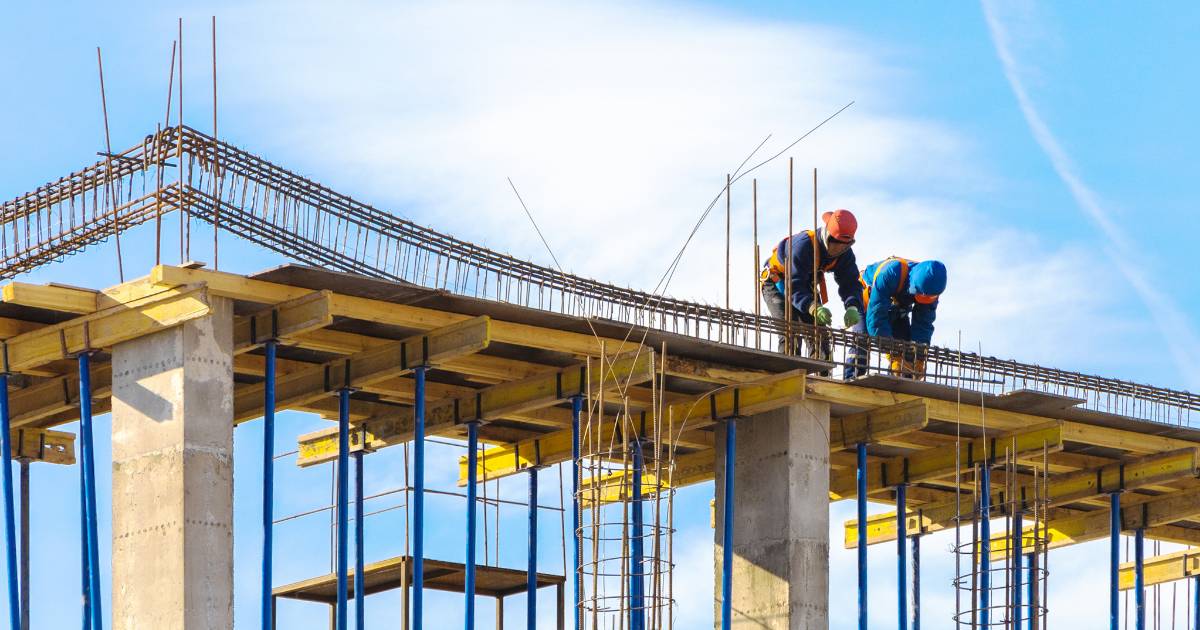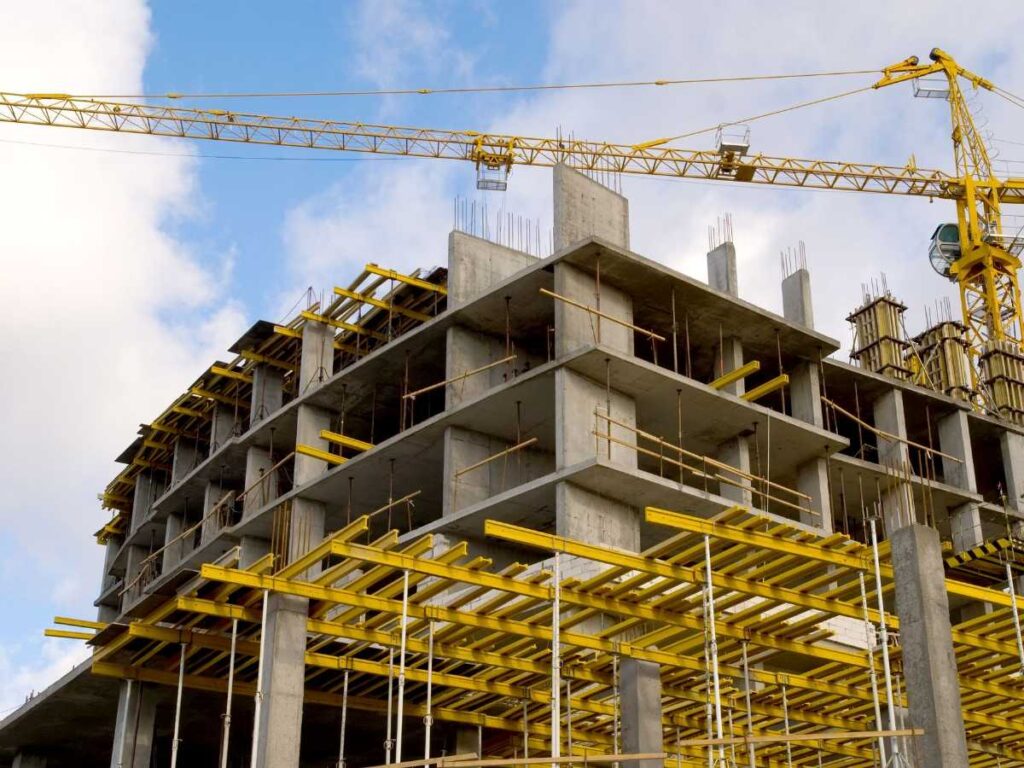Steel reinforcement bars, commonly known as rebar reinforcement, have revolutionized the construction industry. They help to reinforce concrete structures such as bridges, buildings, roads, and tunnels. This article aims to provide best practices for rebar safety and installation to ensure a more robust and durable build.
What is Rebar and its Importance in Construction
Rebar is a steel bar with ridges or deformations on its surface that improves its bonding ability with concrete. It is used as a tensioning device that helps to increase the strength of concrete structures by providing additional support against internal tensile forces. Rebar is one of the most critical components in reinforced concrete structures since it enhances their strength, durability, and resistance to cracks.
Reinforced concrete has been widely used in construction projects because it allows builders to create longer spans without intermediate supports while reducing the risk of structural failures caused by earthquakes or other natural disasters. Concrete alone cannot withstand tensile stresses from external factors such as wind load or seismic events; hence reinforcement with rebar has become an integral part of modern-day construction.

Rebar Reinforcement Safety Best Practices
Personal Protective Equipment (PPE)
When working with rebar, personal protective equipment (PPE) is essential to protect yourself from potential injuries. The following PPE items are required for rebar installation:
- Safety glasses or face shields protect the eye from flying debris and potential splashes of chemicals used during the installation.
- Hard hats protect the head from any falling hazards on the job site.
- Gloves: Gloves help improve grip and prevent cuts and punctures when handling sharp-edged rebar.
- Steel-toe boots: Steel-toe boots prevent crushing injuries caused by heavy objects.
The Importance of Wearing PPE During Rebar Installation
Wearing appropriate PPE during rebar installation should never be overlooked. Understanding that a minor accident could lead to a catastrophic injury without proper PPE is essential. For example, if you are not wearing steel-toe boots and drop a heavy object on your foot, you could suffer a severe injury that could impact your ability to work for weeks or even months (been there, done that).
Safe Handling Procedures
Safe handling of rebar is essential in preventing injuries on the job site. Here are some tips for secure handling:
- Proper lifting techniques – The rebar can be heavy, so it’s necessary to use proper lifting techniques to avoid back strain or other injuries caused by improper lifting methods.
- Avoid tripping hazards – Clearing obstacles or tripping hazards around the work area reduces the likelihood of accidents.
- Keeping the work area clean – A clean worksite ensures easy access to tools and materials while lessening the clutter that can cause accidents.
Proper Lifting Techniques
When lifting rebar, it’s essential to follow proper lifting techniques. Here are some guidelines to follow:
- Bend the knees and always keep your back straight.
- Use leg muscles, not back muscles, to lift the rebar.
- Carry the rebar close to your body and your center of gravity.
- Avoid twisting or bending at the waist while carrying heavy loads.
Avoiding Tripping Hazards
Clearing tripping hazards such as tools and debris from the work area is essential for preventing accidents. Here are some tips for avoiding tripping risks:
- Keep all work areas clean and tidy.
- Clean up spills immediately after they happen.
- Avoid leaving tools and materials on the ground that could cause someone to trip.
Keeping The Work Area Clean And Organized
Keeping a clean and organized work area helps prevent accidents and ensures easy access to tools and materials as needed.
- Sweep or vacuum floors regularly – This keeps debris from accumulating on foundations that can cause tripping hazards.
- Clean up spills immediately after they happen – Spills can lead to slips and falls.
- Create designated spaces for tools – Use tool boxes or shelves set for specific equipment so that everything has its place.
Rebar Installation Best Practices

Pre-Installation Preparation: The Foundation of a Strong Build
Before installing rebar, you need to understand the plans and specifications for the project. This includes knowing the dimensions of the structure, the required rebar spacing and size, and any additional reinforcement requirements. Once you thoroughly understand these details, you can proceed to site preparation.
Site preparation involves ensuring the work area is clean and free from potential hazards. This includes removing debris, leveling the ground, and identifying underground utilities or equipment that may interfere with rebar installation.
Failure to properly prepare the site can result in safety risks for workers and weakened structures. In addition to site preparation, inspecting and maintaining equipment before beginning installation is essential. This includes checking tools such as pliers, cutters, and tie-wire twisters for wear or damage. Any damaged or worn equipment should be replaced before proceeding with the installation.
Placing and Tying Rebar: Guidelines for Maximum Strength
When placing rebar in concrete structures, specific guidelines must be followed to ensure maximum strength of the build. These guidelines include proper reinforcement placement throughout different areas, such as walls, columns, or beams. For example – Generally, walls require vertical placement every 48 inches, whereas horizontal placement requires circumference coverage within every 16 inches apart.
Tying techniques must also be considered when installing rebar to ensure proper alignment and spacing between each piece. Tie wires should be twisted tightly around each piece of rebar at least three times while allowing enough slack so that the wire does not exert too much pressure on the bars.
Concrete Placement Considerations: Rebar Reinforcement Placement
During the concrete pouring, reinforcing bars should be placed precisely according to plan specifications so they do not move about or get displaced. Larger structures require additional equipment, such as cranes, to carefully place the rebars of the right size, length, and spacing within hard-to-reach spots.
Concrete placement techniques must also be considered when installing rebar to prevent cracking or weakening of the structure. This includes appropriately curing the concrete by ensuring it is kept moist and at a consistent temperature for a sufficient period before it is exposed to external stresses.
Inspection Guidelines: Ensuring Quality Workmanship
After rebar installation, inspecting the work to ensure the quality craft is essential. Inspectors should check that all rebar has been correctly installed and tied according to plan specifications. All areas must be leveled out without any protrusions for smooth concrete pouring.
Any issues identified during the inspection should be addressed immediately before proceeding with further construction. This can help prevent future safety hazards and structural weaknesses.
Maintenance Tips: Extending the Life of Reinforced Structures
Proper maintenance must be performed regularly to extend the reinforced structures’ life. This includes monitoring signs of wear or damage over time, such as cracks or rust on metal bars from exposure to water or other outdoor elements.
In addition, regular cleaning can help prevent debris buildup that can cause corrosion over time; this may require pressure washing if necessary, as well as sealing crevices wherever possible to minimize moisture infiltration into metal bars\bends, etc.
Additional Tips for a Stronger, More Durable Build
Inspection Guidelines to Ensure Quality Rebar Reinforcement
Inspecting reinforced structures after installation is needed to identify any potential issues that may compromise their integrity. A thorough inspection should include an assessment of the concrete’s finish, porosity, cracks, spalling or scaling, and examining any exposed reinforcement.
The inspection team should also pay attention to the alignment and spacing of rebar, verifying compliance with specifications and plans. Any deviations from the plan must be addressed before pouring concrete.
Using non-destructive testing techniques can also provide valuable information about potential weaknesses in the structure. It is essential to conduct regular inspections throughout the life cycle of reinforced structures.
During routine maintenance checks, inspectors should look for signs of corrosion or degradation caused by environmental factors such as exposure to moisture or chemicals. Visual inspections may need to be conducted annually or more frequently, depending on environmental conditions and usage patterns.
Maintenance Tips to Extend the Life of Reinforced Structures
Maintaining reinforced structures can extend their lifespan significantly. Regular maintenance helps prevent damage and allows for early detection of minor issues that could become more significant problems if left unchecked.
The most crucial maintenance aspect is preventing corrosion in reinforcement steel within concrete structures. Corrosion can lead to cracking, spalling, or delamination – all severe problems affecting structural integrity and aesthetics.
To reduce corrosion risks, we recommend that contractors use quality materials and ensure a sufficient cover over reinforcement steel bars during concrete placement. Inspectors should monitor coating thickness levels with a magnetic gauge or similar device.
Also, proper drainage systems should be in place to prevent water from pooling around reinforced structures. You can improve the structure’s durability by installing waterproof membranes or drainage mats beneath the concrete slab.
Inspection guidelines and maintenance tips are critical for ensuring that reinforced structures remain strong and durable throughout their lifespan. Careful consideration during installation, quality materials, and regular inspections and maintenance are crucial to extending the life of these vital structures.
Key Takeaways
Safety should be on top priority when working with rebar. Workers must wear PPE such as gloves, safety glasses, hard hats, and steel-toed boots to protect themselves from injury while handling the sharp-edged material. Another critical takeaway is understanding plans and specifications.
Before beginning installation, you must review construction plans and specifications to understand the locations where the rebar needs installation. This step ensures proper placement for maximum strength in the structure. Proper lifting techniques are also crucial during rebar installation. Workers must use their legs instead of their backs when lifting heavy loads of rebar to prevent back injuries. Additionally, keeping a clean work area can help avoid tripping hazards.
Importance of Reinforced Structures
Creating resilient buildings that withstand natural disasters like earthquakes or hurricanes requires reinforced structures. Properly installed rebar provides tensile strength that enhances concrete’s compressive strength while improving its durability against environmental factors such as temperature changes or moisture. By following these best practices for rebar safety and installation outlined in this article, you can ensure your reinforced structures will meet or exceed design expectations while minimizing accidents on site.
Incorporating these best practices into your construction site culture requires proper training and implementation techniques to avoid lapses in ethical procedure awareness over time. As a conscientious builder or construction manager who values quality workmanship above all else, you can reinforce your next project correctly by considering these rebar installation best practices.
Frequently Asked Questions
What is Rebar in Reinforcement?
Rebar, short for reinforcing bar, is a steel rod embedded in concrete to improve its tensile strength. It helps concrete resist cracking and structural failure under tension.
The Difference Between Rebar and Reinforcing Steel?
Rebar is reinforcing steel; the terms are often used interchangeably. However, “reinforcing steel” is the broader category, while “rebar” usually refers to specific rods or bars used in construction.
What Strength is Rebar Reinforcement?
Most common rebar grades, like Grade 60, have a yield strength of 60,000 psi, though other grades range from 40,000 to over 100,000 psi depending on the application and specification.
Is Rebar Needed for a 4-inch Slab?
For light-duty applications like walkways or patios, a 4-inch slab may not require rebar, but wire mesh or fiber reinforcement is often recommended. For heavier loads or to prevent cracking, rebar adds crucial strength and durability.
Further Readings
Our Locations
Get a Quote Now

